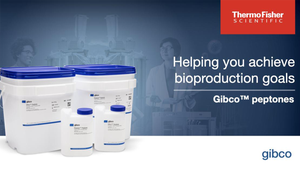- Sponsored Content
- Downstream Processing
Quantum ReNu SU Technology® Validation Guide and Performance Testing Summary
May 22, 2017

Already have an account?
Sponsored by WatsonMarlow
As the use of disposable systems within biopharmaceutical manufacturing has moved from niche preclinical applications to large scale commercial processes. This has led to the requirement for novel technologies that improve processing throughput and allow manufacturers to increase their output. To this end, WMFTG has developed a new pumping technology to enable end-users to meet their downstream processing needs for unit operations such as chromatography and tangential flow filtration (TFF). Quantum allows end-users to use novel peristaltic technology for their downstream processing applications. Quantum also contains a revolutionary ReNU cartridge which carries the fluid through the pump. ReNu Cartridge consists of polyurethane tubing and high density polyethylene (HDPE). The materials used in the ReNu cartridge are manufactured in ISO Class 7 cleanrooms within facilities operating quality management systems defined in ISO 9001 guidelines. These materials have qualified using a range of compendial tests to meet current industry expectations and market requirements.
Biocompatibility is one of the main criteria to determine if a plastic is safe to be used for pharmaceutical applications. The testing protocols are described in ISO 10993, USP 88 and USP 87. Both the materials used in the ReNu cartridge have been evaluated using the prescribed testing protocol and have passed. Additionally, in order to help end-users to evaluate the level of endotoxin and particulates that could be introduced into their process as a result of the manufacturing equipment, USP 85 and USP 788 was performed on the materials. The particulate level introduced by ReNU cartridge was less than that specified for small and large volume parenterals. The endotoxin level for ReNu cartridge when tested is less than for purified water.
Furthermore, the materials have been assessed to ensure there have limited allergenic and haemolytic potential. The polyurethane and HDPE materials used in the ReNU cartridge has met the requirements of the Kligman Maximisation and ISO 10993-4 test protocols.
Part of the increasing expectations around single use components is the requirement for extractables data. The provision of extractables data allows an end user to perform a risk assessment to ensure there are compounds of a potential safety concern that could be found in the final drug product. In this regard, ReNu cartridge has also been tested using a multiple solvent extraction approach. The multiple solvent approach has been described in both BPOG‘s standardised extractables protocol and upcoming USP 665 guidelines. The extracted solvents were analysed for semi volatile, volatile, non-volatile and elemental extractables. The extractables detected were identified as being related to the materials of construction. It would be anticipated that the levels of extractables would be greatly diluted during normal processing conditions.
About the Author
You May Also Like





